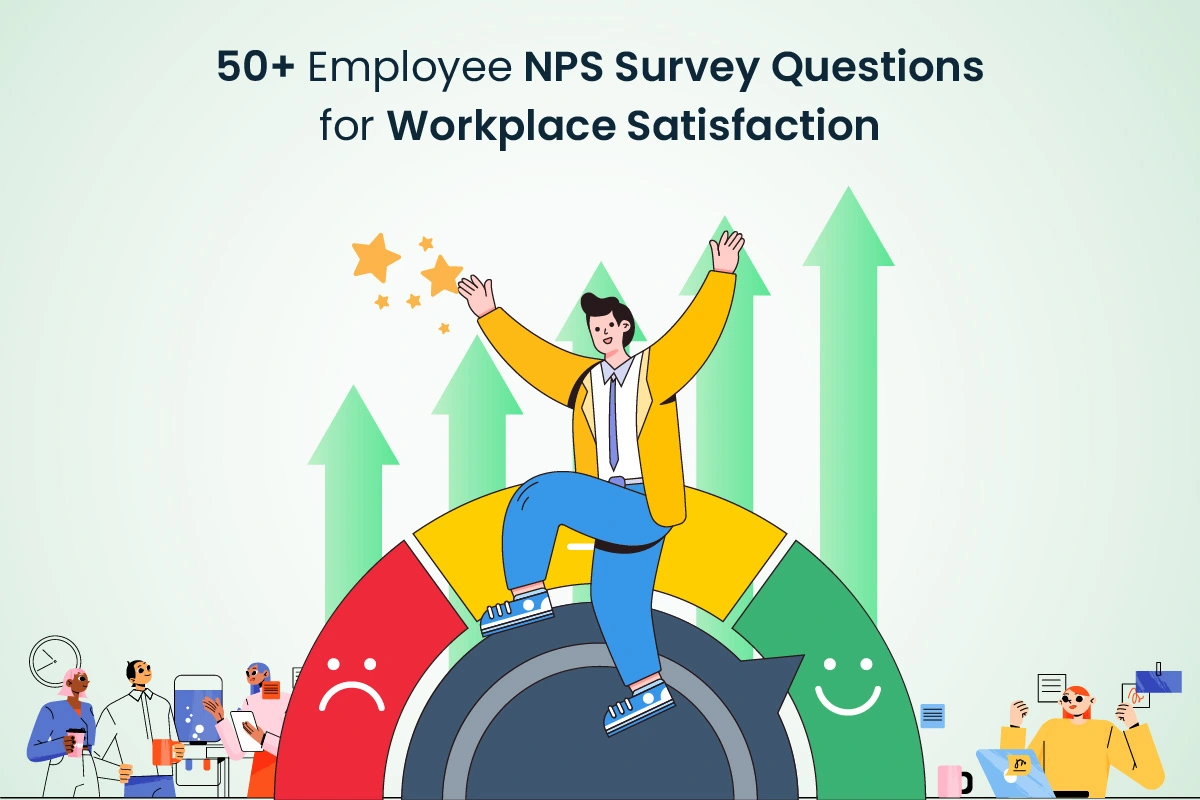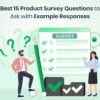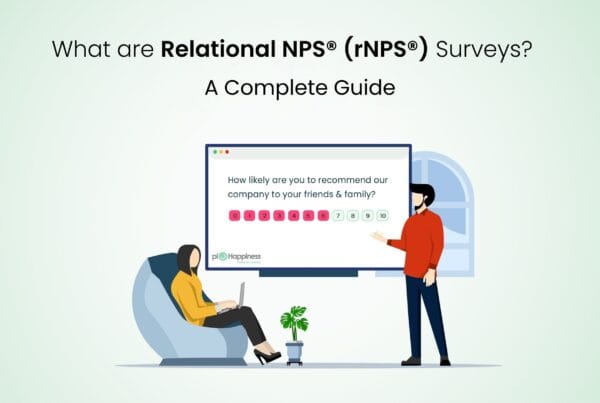Measuring employee loyalty and engagement in a productive work environment has become essential in modern day work-life balance. Because tracking employee satisfaction can foster a positive culture and improves retention. One of the effective ways to gauge employee satisfaction levels is Employee NPS Survey Questions approach.
By asking the right questions, Human Resources department can bridge the gap between management and employees. This framework uncovers strengths, areas for improvement and enhance overall engagement.
In this blog, we will explore ENPS, its benefits and provide over 50 questions as sample that can be used by enterprises.
What is ENPS?
Employee Net Promoter Score (ENPS) is an adaptation of the classic Net Promoter Score (NPS), used in customer feedback. ENPS is a metric used to measure an employee’s satisfaction. It asks simple yet powerful questions. Here is a sample question:
- On a scale of 0-10, how likely are you to recommend your company as a place to work?
The responses to this question have three categories and they are
- Promoters who are likely to give between 9-10
- Passives who are likely to give their score between 7-8
- Detractors who would put their score between 0-6
ENPS is calculated by subtracting the percentage of Detractors from Promoters and a score above 50 indicates strong employee engagement while low score strongly hints at improvement needed.
Benefits of ENPS
Implementing ENPS comes with multiple benefits. Here are a few at glance.
- Regular assessment can identify trends like employee engagement levels and morale before they escalate into retention challenges.
- Pinpoint strengths and weaknesses across departments.
- Track the impact of initiatives deployed for employees benefits.
These benefits send a strong signal to employees that their opinions are being valued by organizations and acted upon.
How different is ENPS from Traditional Surveys?
Traditional surveys contains Employee satisfaction survey questions, covering from benefits to training opportunities whereas ENPS focuses on single predictive metric. In comparison, traditional surveys offer comprehensive analysis while ENPS offers agility. Below are the ENPS questions which include a brief explanation.
Core ENPS Questions
Focusing on the primary loyalty metric
- On a scale of 0-10, how likely are you to recommend our company as the best place to work?
- On a scale of 0-10, how likely are you to recommend this organization to a friend or colleague?
- Based on your overall experience, how likely are you to recommend working here on a scale of 0-10?
Follow-up and Open-Ended Questions
- What is the primary reason for your score?
- What would prompt you to give our company a higher score?
- What do you like most about working here?
Motivation
- How motivated do you feel to do your best work every day?
- What factors most influence your motivation at work?
- What could we do to help you feel more engaged?
Satisfaction with Leadership and Management
- On a scale of 0-10, how supported do you feel by your manager?
- Do you feel your manager values your contributions? (Yes/No)
- How helpful is your manager when you encounter issues at work? (Scale 0-10)
- On a scale of 0-10, how well does leadership prioritize employee well-being?
- Do you feel empowered by management to share ideas? (Scale 0-10)
Job Satisfaction & Role Clarity
- Do you find your work meaningful and impactful?
- Are your job responsibilities clearly defined?
- Do you have the necessary resources to perform your job well?
- Would you consider staying with the company long-term?
Career Development and Growth
- How well are your skills utilized in your role? (Scale 0-10)
- Are you satisfied with the opportunities for professional growth? (Yes/No)
- Do you see yourself working here in the next five years? (Scale 0-10)
- What resources do you need for better professional growth?
- Has the company met your expectations for career progression? (Yes/No)
Work-Life Balance
- Are you satisfied with your current work-life balance?
- Does the company support employee mental health?
- How often do you work outside of business hours?
- Are workplace flexibility policies (remote/hybrid work) effective?
- What could the company do to improve work-life balance?
Work Environment and Culture
- On a scale of 0-10, how satisfied are you with the workplace culture?
- Do you feel the company invests in diversity and inclusion? (Scale 0-10)
- What aspects of our culture do you value most?
- How satisfied are you with office facilities and resources? (Scale 0-10)
Compensation and Benefits
- On a scale of 0-10, how satisfied are you with your compensation?
- What benefits do you value most?
- How fair is the reward system for contributions? (Scale 0-10)
- Would additional perks (wellness programs, childcare support) improve your satisfaction? (Yes/No)
- What improvements could be made to compensation packages?
Team and Collaboration
- Do you feel a sense of belonging within your team?
- Are team meetings productive and engaging?
- On a scale of 0-10, how satisfied are you with team collaboration?
- How effective is communication within your department? (Scale 0-10)
- On a scale of 0-10, how well do teams support each other?
Organizational Alignment
- Do you understand the company’s mission and goals?
- Do you feel your work directly contributes to organizational success?
- How aligned are your personal values with the company’s values?
- How effective is internal communication about company updates?
- What could leadership do to improve transparency?
Overall Engagement and Innovation
- How exciting is your daily work? (Scale 0-10)
- Do you feel proud to work for this company? (Yes/No)
- On a scale of 0-10, how aligned are company values with your own?
- What drives your willingness to go the extra mile?
By including these workplace NPS survey questions, organizations can collect meaningful data to promote positive change. Review responses quickly, share important findings with employees, and create feedback loops to demonstrate commitment to improvement.
A high ENPS increases retention, helps the business stand out as a preferred employer in a competitive market. For the best results, tailor these questions to suit industry and company size, making sure they connect with the workforce.
Conclusion
A successful ENPS program begins with Employee NPS Survey Questions that stem from good Employee NPS questions and express what’s happening at workplace. The Employee NPS metric is simple, and paired with the right follow-up questions and intentions in the leadership role, firms can gain actionable insights that promote engagement, satisfaction, and retention. The right Employer NPS questions, asked at the right moment, can leverage feedback into competitive advantage.








